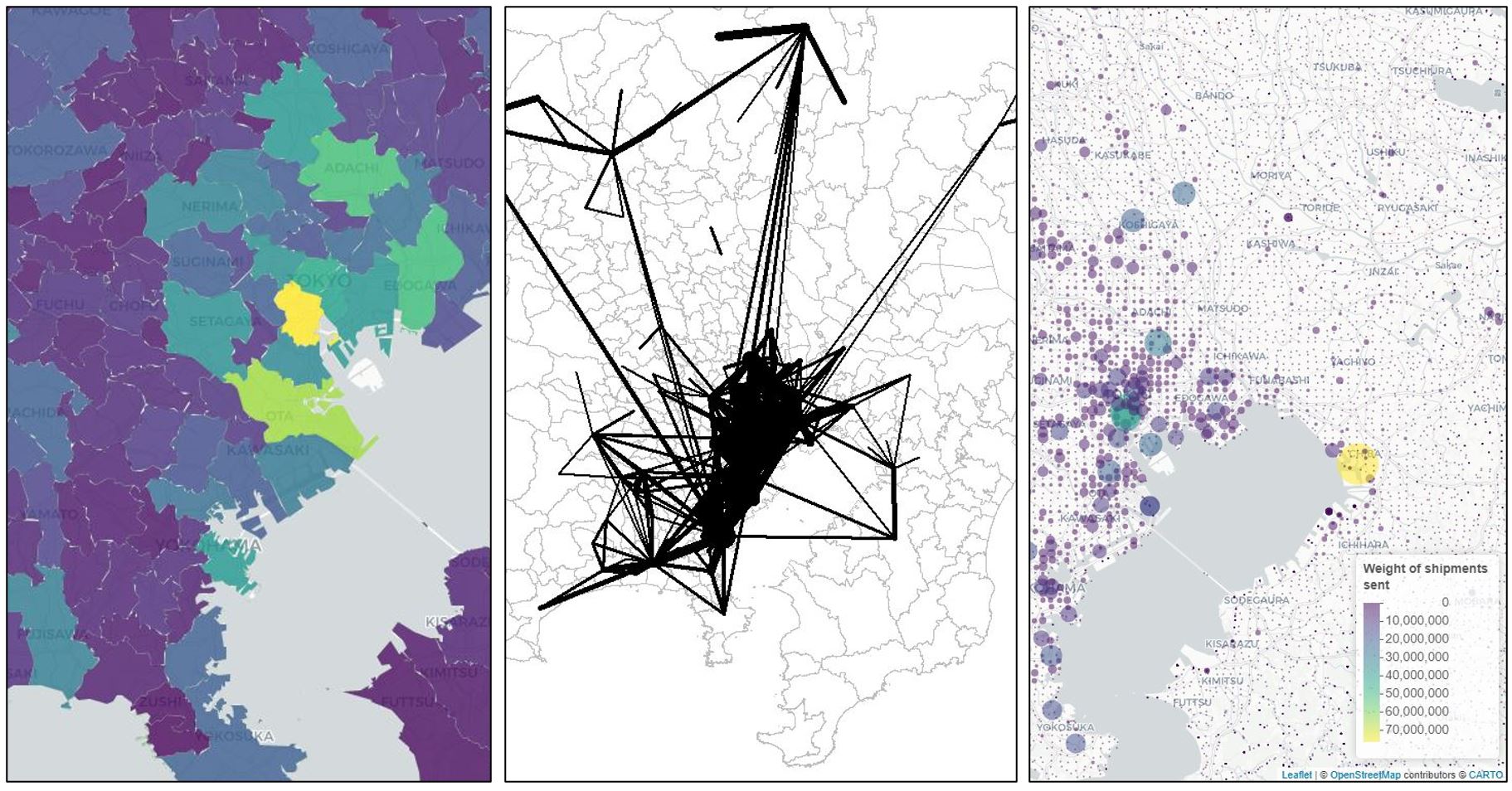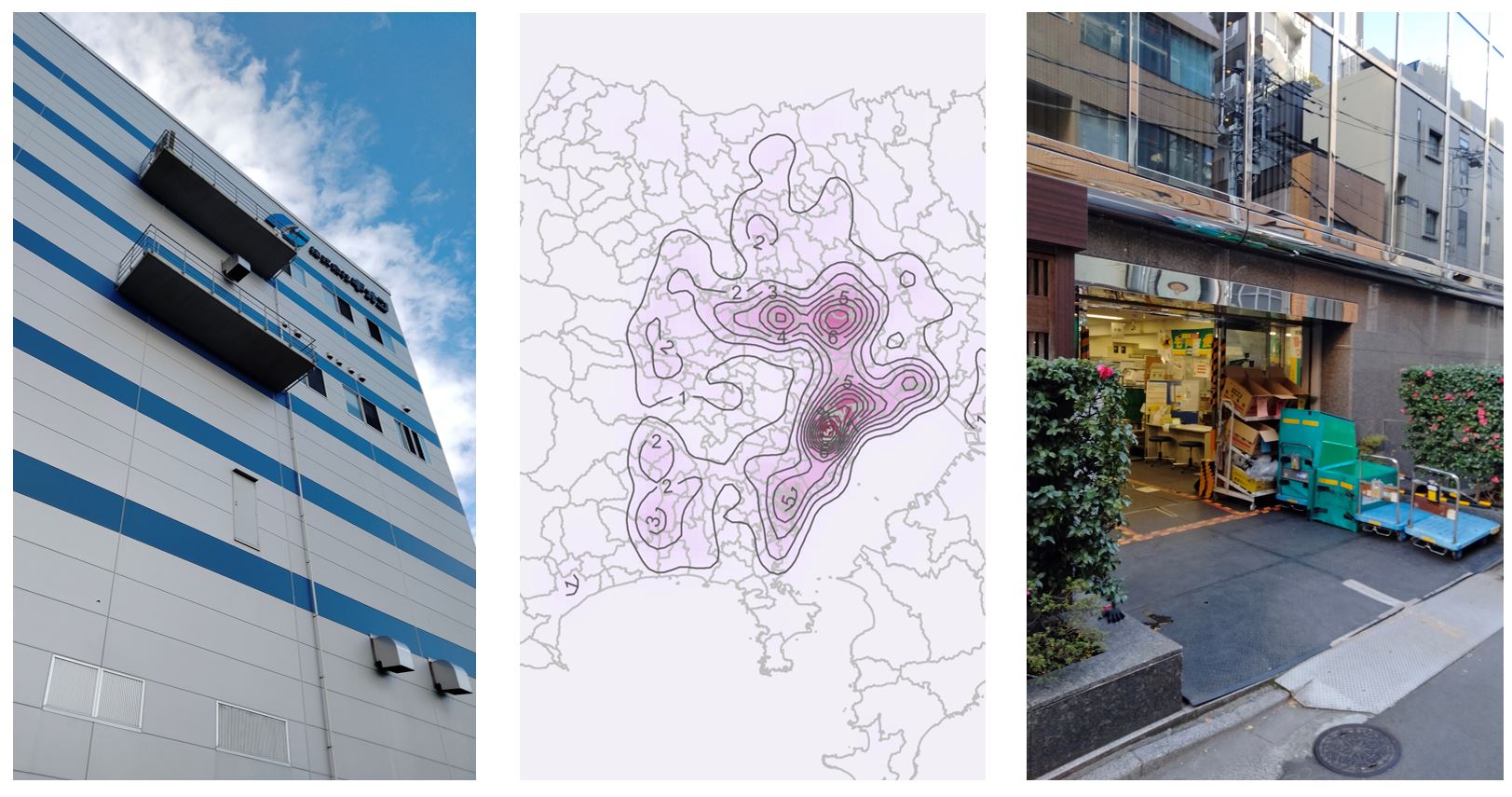Development of simulators as analytical platforms
We continuously develop and improve our urban and transportation simulators while incorporating the latest behavioral analysis models and data science methods. We also update the simulator in response to new data sources including Big Data (GPS data, sensing data, camera data, delivery records, etc.), newly proposed measures and solutions, and planning needs such as the pandemic and earthquake/disaster response.

Agent-based freight simulation and its applications (slides)
Long-term urban structural changes and logistics land use
The transformation of logistics systems over the past several decades has significantly affected logistics land use, and the need for related logistics facilities (e.g., distribution centers) is expected to further increase as the e-commerce market grows rapidly. On the other hand, the number of traditional retail and commercial facilities is expected to decline, and the spread of telecommuting is likely to lead to a contraction of activity in office areas. The global urban structure is likely to change dramatically over the next several decades. We analyze and assess these long-term changes in urban structure and their impact on traffic flows and the environment, mainly from a logistics perspective.

Logistics policies and solutions related to e-commerce
E-commerce is transforming the existing logistics system, increasing consumer convenience, while the increase in parcel deliveries is considered making freight flows inefficient. The e-commerce delivery demand is expected to increase even more significantly. We propose and evaluate next-generation delivery solutions.
Preprints of our research are available at ResearchGate.
